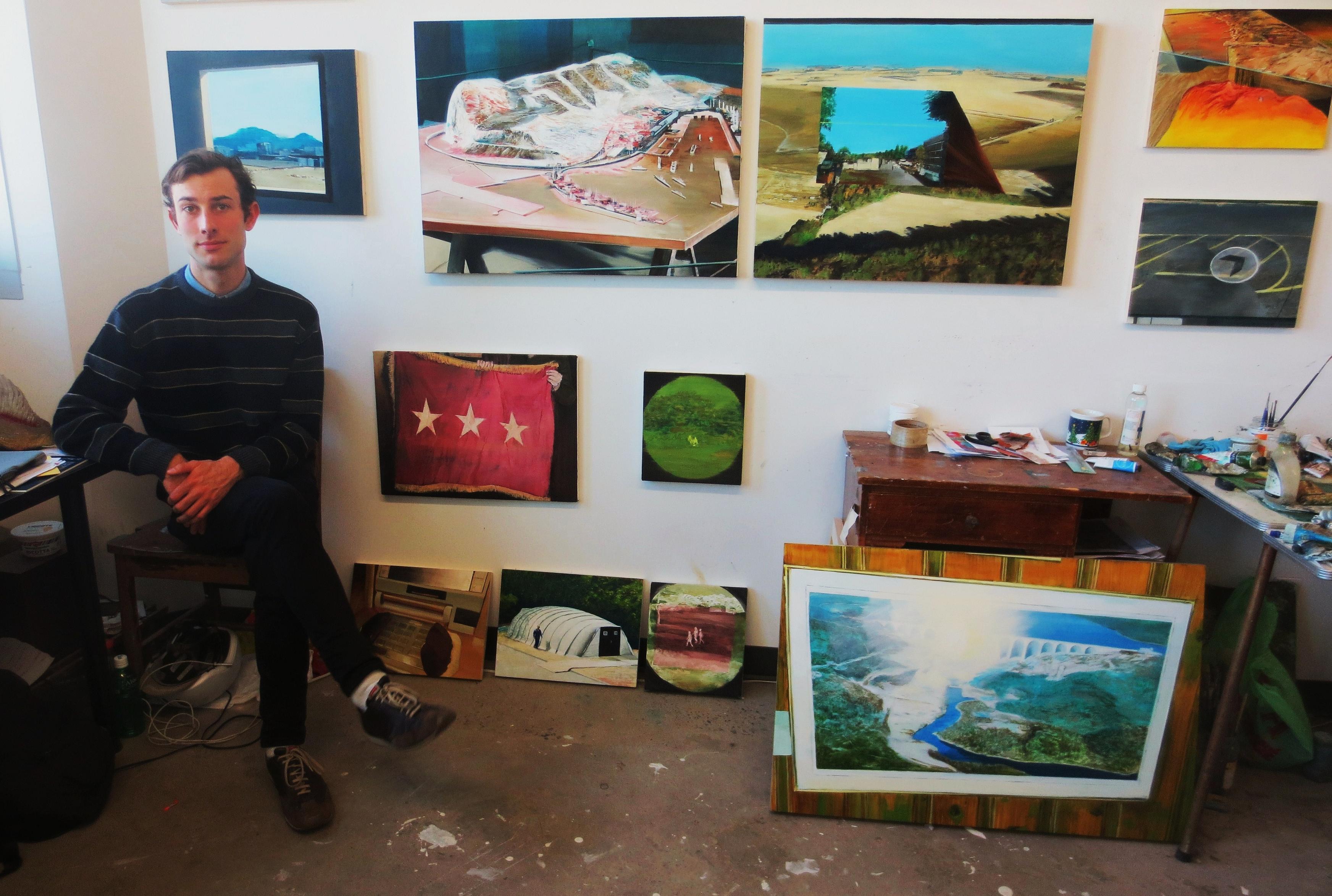
Although painter John Player attempts to convey a sense of detachment in his canvases, it is difficult to feel indifferent about his images once the source material is revealed. For the past several years, the Montreal-based Player has derived much of his output on found images – both historical and contemporary – documenting the macro and micro of the global military-industrial complex. A painting depicting an array of computers on a desktop may come across as banal, but once we learn that the source image was taken in a counter-terrorism bureau in Russia, we’re intrigued. A sense of the covert and mysterious informs Player’s source material, which the artist amplifies in his paintings by focusing on specific elements, taking them into the realm of the uncanny.
Player received his MFA in painting and drawing from Concordia University (Montreal) in 2014. His work has appeared in solo and group shows in Toronto and Montreal. His next solo exhibition is scheduled for January 2017 at his Montreal gallery Pierre-François Ouellette Art Contemporain. Magenta editor Bill Clarke met with the artist at his Montreal studio earlier this year, and then talked with him via Skype in October for the following Studio View.
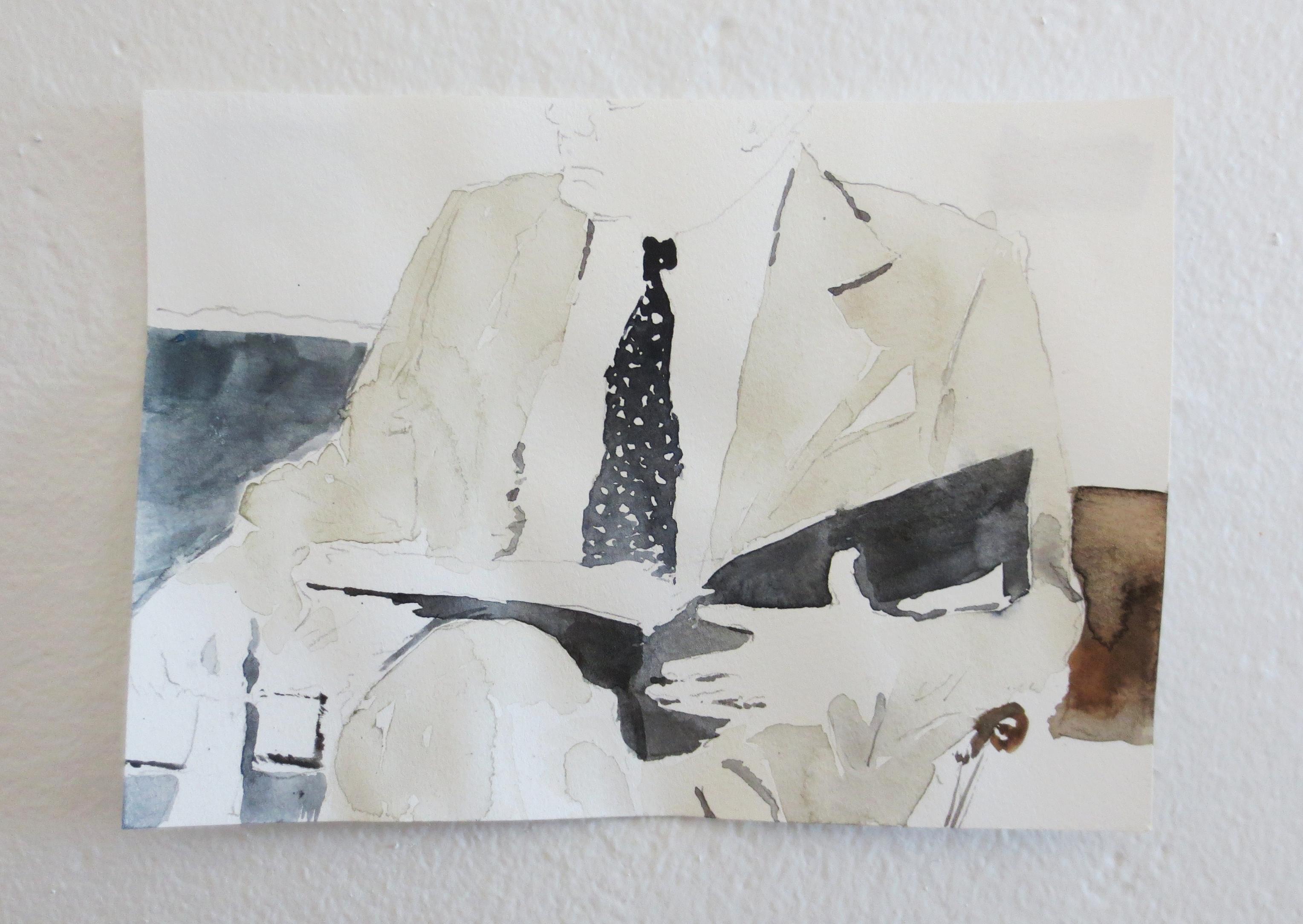
This is a small watercolour from a body of work made about two years ago. It’s a study for a larger painting; I stopped making these smaller studies, but I want to get back to doing them because they’re a good way to get an idea down immediately. This is a sketch of Alexander Haig who was the Secretary of State under President Reagan in the early 1980s. I was doing a series of paintings derived from images from the Cold War, but I was obscuring their context by focusing on details. If you zoomed out from this detail of Haig, you’d see that he was sitting in the Oval Office. At the time, I was interested in conveying a sense of the unknown. This is something that has been developing in my work since completing my MFA.
I also don’t normally paint people, so that series was a bit of a one-off. I found that they detract from the impersonal quality I wanted in my work, the sense of these dehumanized and dehumanizing spaces. If I included people, viewers would start to wonder who they were and what they were doing. But, I’m now questioning whether to start including figures because I do like painting people.
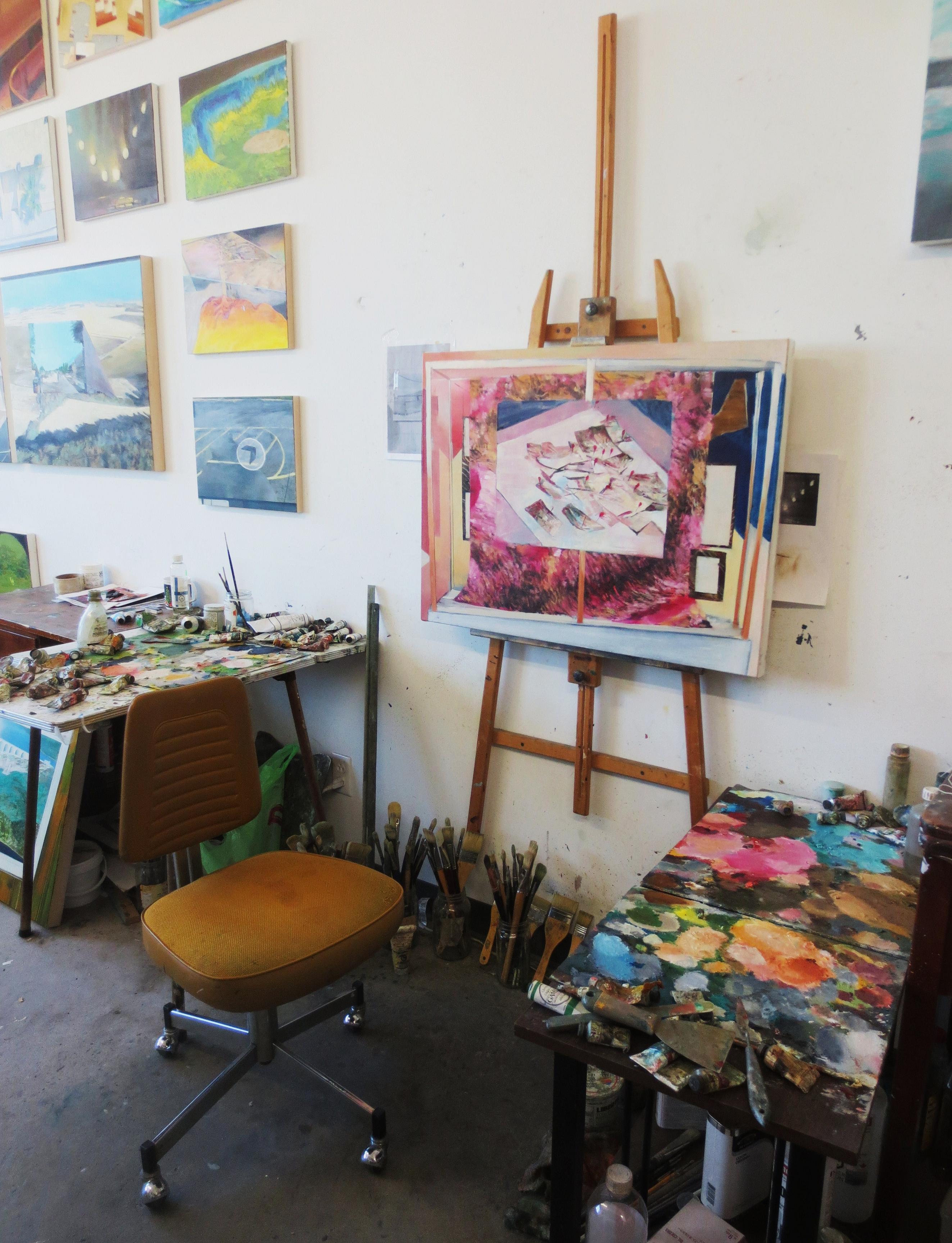
This is my studio. The painting on the easel is a bit different because I’m using a collage technique. It gives me more control over how I play with the composition, and I’m appropriating less directly from source material than I have in the past. You’ll see a piece of paper taped to the wall to the left of the easel. I enlarge images for my canvases by hand. I could project the image directly onto the canvas, but that feels too easy. I like this by-hand drafting technique because it allows a bit of quirkiness into the composition. I’m able to inject more of my own decision-making into the painting’s composition. Just copying images directly would become tedious.
The source images for this painting are a museum display and some archival topographical photography, created using mapping technology from the Second World War. They’d take aerial photographs and then composite them together like a collage. It’s almost like early Google imaging. Because I’m attracted to aerial views, my paintings are somewhat about how we’ve looked at the world from above, historically, and how this was driven by the military. Now this technology is used for resource exploitation by mining companies and even the total surveillance of our daily lives. I’m not necessarily trying to critique the technology itself, but there is an underlying critique about the imperialist mindset that lead to the West’s domination over many parts of the world. But, in a painting sense, I’m trying to comment on a technology and the driving ideology that is rapidly changing the way we interact with the world. I see a confrontation with the digital image when you recreate it in painting; it slows the reading of the visual and forces contemplation in the face of convenience and speed.
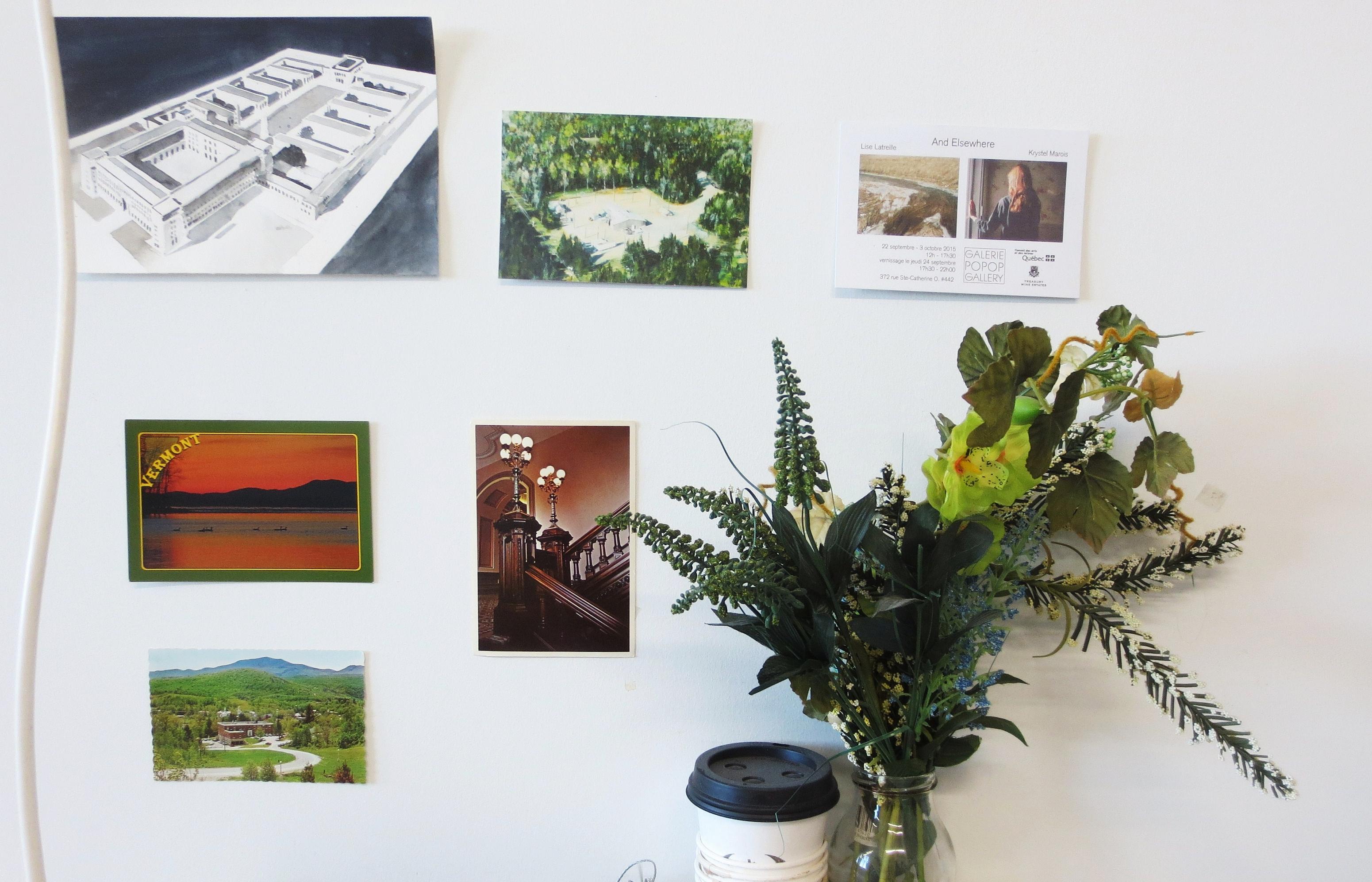
As I mentioned, I’m attracted to aerial views, so I’ve collected a lot of postcards with aerial perspectives. Sometimes I pin them to my studio wall for inspiration. The watercolour in the top left of this photo is a maquette of a German military college, the real thing was never fully completed and buried in the rubble of World War II. It doesn’t look as imposing as the real life version; using its model as the reference, and playing with scale or focusing on just a single element of an image is what adds to the ambiguity. The photo in the centre is a postcard of the main staircase of California’s state capitol building, sent from a friend. Something like that postcard might inspire me compositionally, but I won’t reference the image directly. A lot of my sourcing is intuitive. Most viewers think that my source images are solely of war zones or military buildings, but they aren‘t always. The landscapes could be the result of settler culture or resource extraction; the buildings could be relics of military occupation and colonialism, have a current function in the surveillance state or be sites where people are tax sheltering their wealth. We all know such places exist, but we don’t really know what happens in them. We feel anxiety and a sense of powerlessness when we consider our position amongst these power structures, and I think it is that sense of frustration that compels me to address these images.
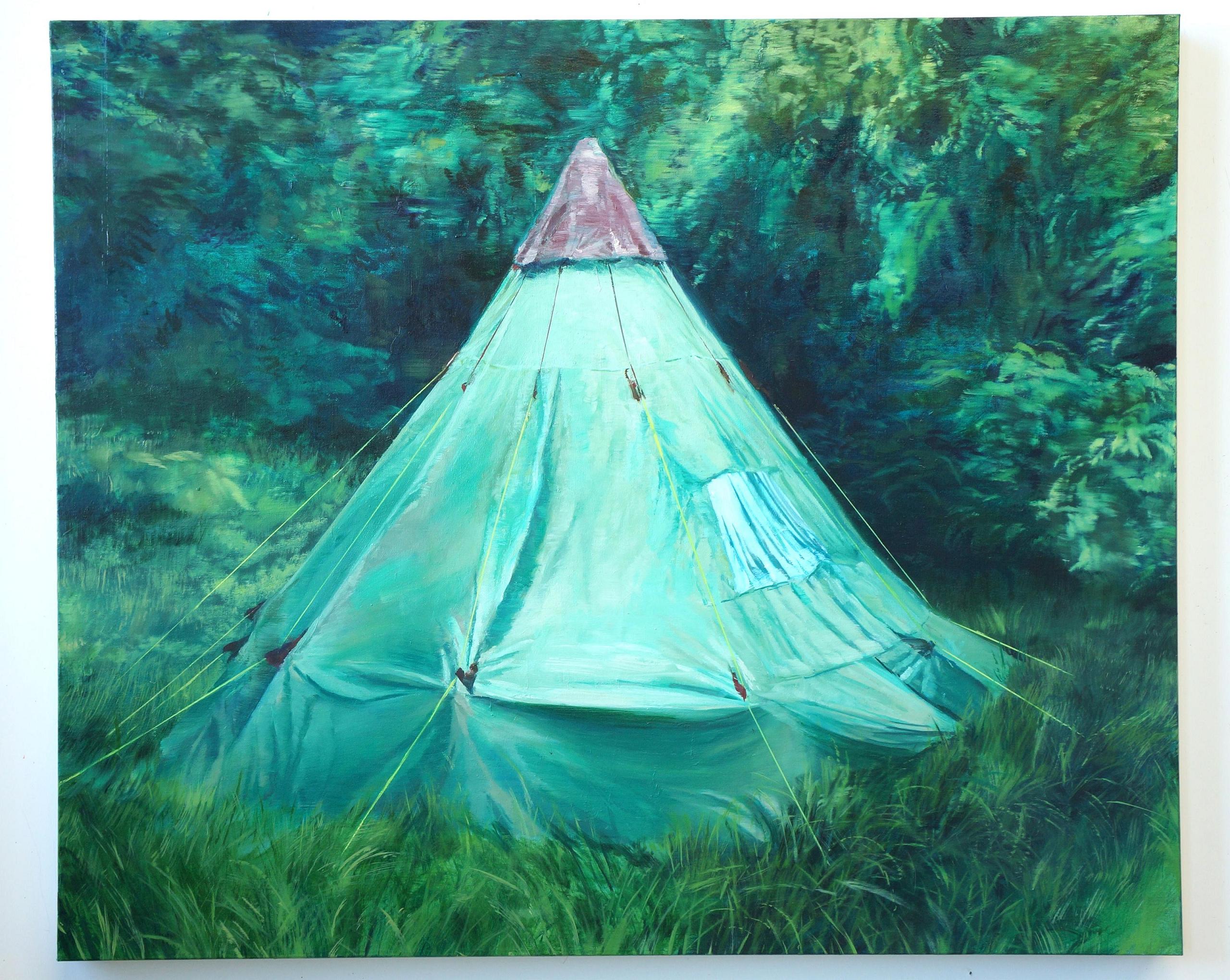
This past summer, I went on a cycling trip through Poland and other parts of Eastern Europe, documenting old Soviet military buildings. I was getting bored with using only sourced images, so I wanted to start taking my own photos of some of these sites. I thought that doing so would reinvest me in the subject matter and make it feel more personal. This painting [Shelter, 2016] is based on a photo from that trip, and it may end up in the upcoming show in January. It’s a tent that I found set up next to an abandoned U.S. surveillance station in Germany – in fact, built on top of the military college I mentioned earlier. The base had been taken over by members of a ‘back-to-the-land’ commune. I became interested in the temporary structures around these disused military structures. When we see such structures in the media, we think of temporary refugee shelters or structures that have been set up to meet immediate needs in times of crisis. They become symbols for bigger issues, like migration or, on the other hand, occupation. The perspective is more direct since it’s not an aerial view, but it still embodies the unknown, a sense of uncertainly about the future.
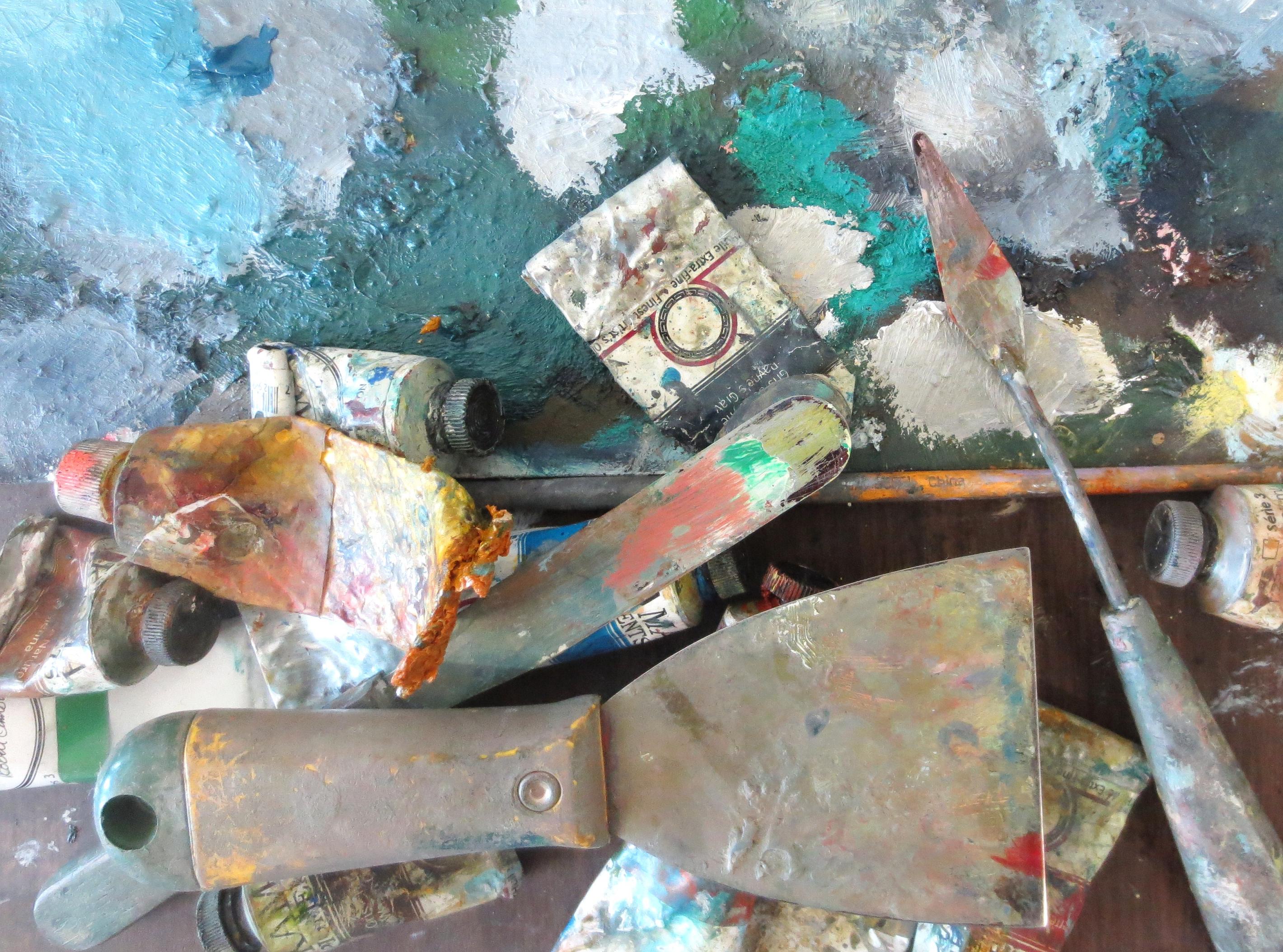
I’ve been a painter for a while, and I was pretty stubborn about sticking with it in school when there was pressure to be multidisciplinary. I always felt that it was the medium for me; its slowness. I guess I’m pretty traditional… a bit of a fuddy-duddy. Maybe I was influenced by my dad. He was a painter who gave it up but he encouraged me. It takes a long time to become a good painter and make paintings that matter. The multidisciplinary thing works for other people, but probably not for me. If I tried another medium, it would dilute what I do now. I find painting meditative; I can’t really think about anything else other than what is in front of me. It becomes kind of Zen. Painting for me is about opening up and achieving a state of vulnerability in which the unexpected can be free to happen. Happiness is seeing an image coming into focus on a canvas. I’ve always found paint seductive.
John Player’s next solo exhibition is scheduled for January 2017 at Pierre-François Ouellette Art Contemporain in Montreal.
Bill Clarke was the Executive Editor of Magenta Magazine Online from its inception in September 2009 until May 2017. His writing has been published in Modern Painters, Art Review, Canadian Art, Artnews and several other publications. In January 2017, he assumed the position of associate director at Angell Gallery in Toronto.
Cold War Eastern Europe found images Germany John Player military Montreal painting Pierre-Francois Ouellette surveillance



